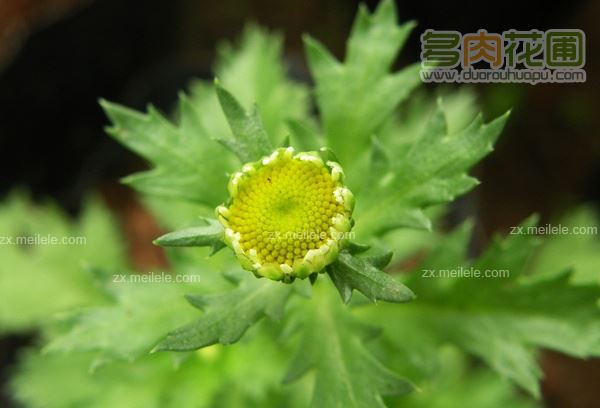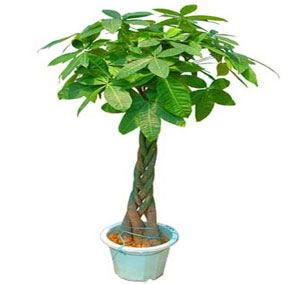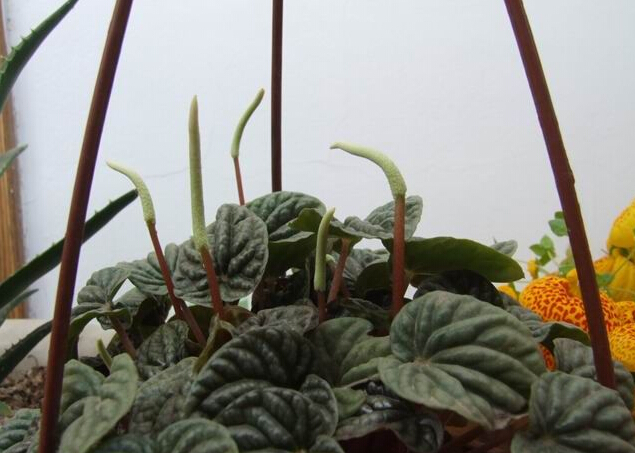How to raise mosquito repellent?
The scientific name of mosquito repellent is geranium, which is a kind of plant belonging to geranium, which can naturally emit a kind of lemon aroma. As a result, mosquito repellent occupies a very important position in the perfume industry, which is cultivated by a large number of people and distilled into leaf aromatherapy. Mosquito repellent has a variety of odors, including rose, citrus, mint, coconut and bean curd, as well as a variety of fruit flavors, which have a significant effect on mosquito repellent.
English name: mosquito repellent
Scientific name: pelargonium graveolens
Aliases: mosquito repellent vanilla, geranium, rose geranium
Family: geraniaceae of Niu Miaonidae
Genus: pelargonium of pelargonium
Distribution of origin: native to southern Africa, especially the Cape of good Hope-Belt
Morphological features: the young plants are herbaceous, succulent and succulent; the old plants are semi-textured and the pulp heart is empty. The whole plant has a peculiar smell. Simple leaves alternate, round, reniform or fan-shaped, with palmately parted, long peduncle, with fine hairs on it. Umbels, periphery, pollen color, 5 calyx, 5 petals, 5 stamens, compound pistil.
How to raise mosquito repellent?
▲ mosquito repellent grows rapidly and needs to be changed to increase soil and fertilizer once a year, usually in early spring from February to early March. Prune first, keep only 3 lateral buds at the base of each branch, remove the decaying roots, replace the new fertilized culture soil and apply base fertilizer.
▲ mosquito repellent prefers neutral and acidic soil and fertilizes once in 15-20 days. In the first ten days of April, after the mosquito repellent grass grows new branches, the dilute organic liquid fertilizer is applied once a week, and it will blossom one after another when it is removed from the outside in the last ten days. Move to the scattered light on the inside of the balcony in early June. If the surface of the basin soil turns white, it will be watered. Mosquito repellent grass should be watered thoroughly for 3-6 days, but no water should be accumulated. From July to August, we should often spray water to cool down and keep the surrounding environment moist.
▲ repellent mosquito grass likes light, except for a little shade in summer, there should be direct sunlight in autumn, winter and spring. Mosquito repellent grass likes temperature and water, 10-25 degrees Celsius is the suitable growth temperature, below 7 degrees Celsius, the temperature above 32 degrees Celsius is unfavorable for growth, and the indoor overwintering temperature is not less than 12 degrees Celsius.
If yellow leaves appear in ▲ mosquito repellent, it needs to be picked in time.

General mosquito repellent grass planting season in early March, you can choose the way of sowing, cutting, generally in the spring and autumn season, the way of cutting is easier to survive. When planting, bury the seeds in fine sand about 3 centimeters, usually water them thoroughly after four hours, and keep the soil moist. Put indoors in spring, the temperature is about 20 degrees Celsius, after its germination, it can be planted separately.
Mosquito repellent grass grows very fast and generally needs to change soil and increase fertilizer once a year. Usually, the season of changing basin and increasing soil is about February, which can be pruned first, and then changed basin. When a new bud comes out in April, it can be fertilized once. In late April, you can move out of the room, try to move to a cool place for breeding in hot weather, and keep the soil moisture. In winter, it can be moved into indoor breeding around October.
For insect pest control of mosquito repellent grass, the phenomenon of rotten leaves and roots is caused by improper management, which is caused by excessive humidity and poor ventilation. generally, the common short-term leaf loss belongs to the lack of light of the plant, which can be properly placed in a place with light, and the leaves fall off and turn yellow due to lack of water, and this may also happen in winter because the temperature is too low. Too much fertilization or too much light will cause scorched leaves, which need to be paid attention to.
The cultivation of mosquito repellent grass should help the change of temperature. Mosquito repellent grass is a very effective mosquito repellent plant. Studies have shown that when the leaves of mosquito repellent grass reach 15, the mosquito repellent rate can reach 97.8%. The effective range of each mosquito repellent plant is about 18 square meters, which is environmentally friendly and has strong mosquito repellent performance. [more information] | what does the white rose mean | what is the plant protection against computer radiation | succulent plants | efficacy and function of sweet-scented osmanthus | Lavender florescence | | Magnolia lanceolata | Rhododendron culture methods and precautions | Indoor foliage plants | Parthenocissus | Lily discount | Osmanthus | | Culture methods of mimosa | how to raise succulent plants | efficacy and function of gynostemma pentaphyllum | efficacy and function of Honeysuckle | Geranium | |
How to raise mosquito repellent
How to raise mosquito repellent
Mosquito repellent is a perennial evergreen herb with tenacious vitality. Nowadays, people like to put it indoors or on the balcony as a potted plant. Do you have mosquito repellent at home? Collect a few breeding skills, your mosquito repellent grass will certainly be able to grow more fat and robust.
1. Light. Mosquito repellent grass likes to be exposed to plenty of sunlight, so it can be placed outdoors during the day to receive light, but pay attention to proper shade to prevent its leaf tips or edges from being scorched.
2. Soil. Mosquito repellent grass likes loose sandy loam, and the soil is better acidic.
3. Moisture. Just keep the soil moist in the mosquito repellent flowerpot, such as watering once a week. It is not necessary to overwater the soil so as not to cause soil alkalinization.
4. Change the basin. Mosquito repellent has a well-developed root system. If it grows too luxuriantly, you might as well transplant the new plant to another flowerpot, or change the mosquito repellent to a larger flowerpot.
5. Fertilization. Compound fertilizer can be applied to mosquito repellent grass once every 15-20 days, and soil application is used instead of direct foliar spraying.
Usage: when there are many mosquitoes at night, move the mosquito repellent into the room and sprinkle some water on its leaves to volatilize citronellal to ward off mosquitoes.
How does mosquito repellent breed
Mosquito repellent grass can propagate in the same way as most potted plants, which can be sown and propagated by cuttings. But both methods of reproduction need to test your parents' potted techniques. Let's take a look at the correct operation.
If you choose to sow and reproduce, you should sow the seeds in clean fine sandy soil in the first ten days of March, with a depth of about 3cm; if you choose cutting propagation, it is best to do so in spring and autumn, and remember to water it thoroughly 4 hours after cutting. Indoor cultivation of mosquito repellent should be kept at a room temperature of about 20 ℃, so that after one month, the seeds sown can germinate, and the new cutting plants can also take root.
Mosquito repellent grows fast. Parents remember to change the basin once a year, trim it a little from February to March every year, throw away its yellow leaves, withered leaves and aging roots, and apply fertilizer every 15-20 days, so that mosquito repellent can grow and bloom better.
How to get through the winter with mosquito repellent
Whether in the north or the south, the temperature in winter is relatively low, and the soil temperature and humidity in the flowerpot are not suitable for the growth of mosquito repellent. How should you help the mosquito repellent survive the winter? Here are some practical tips to take a look at.
1. Keep the sun shining. The temperature is low in winter, so it is a good choice to put mosquito repellent grass on the sunny windowsill, which can not only carry out photosynthesis, but also raise the soil temperature properly.
2. Remove the stagnant water in the basin. As the amount of water evaporation in the soil decreases in winter, parents should pay attention to reducing the amount of water and times of watering, so as not to accumulate too much water in the basin, resulting in mosquito repellent grass root rot.
3. Cut off the excess branches and leaves. It's easy to get through the winter by throwing away the burden, so cut off the ugly branches and yellow ones.
4. Insist on "staying at home". The suitable temperature for mosquito repellent growth is 10-25 ℃, which can only be provided indoors, so don't move your mosquito repellent outdoors in winter, open a window to give it some air and OK if necessary.
What if the mosquito repellent leaves turn yellow?
Yellowing of leaves is a sore spot in potted plants, and many wrong maintenance methods may lead to yellowing and drying up of leaves. So when the mosquito repellent leaves turn yellow, how should you deal with it correctly?
Symptom 1: sudden leaf loss in a short period of time
The disease is caused by rapid temperature change or lack of light. The correct way is to put mosquito repellent grass in the sun, pay attention to the length of light to gradually increase, can not be direct sunlight for a long time.
Symptom 2: the leaves turn yellow and fall off soon.
The disease is due to too much watering. The correct way is to reduce the amount of water and frequency of watering, and maintain soil moisture, especially in winter.
Symptom 3: leaf tip drying or leaf edge withering
The disease is due to excessive fertilization. The correct way is to lengthen the interval of fertilization, so that the mosquito repellent grass to achieve nutrient balance, the leaves will gradually recover.
Symptom 4: large withered and yellow leaves
The disease is caused by yellow leaf pathogen. The correct way is to cut off the yellow leaves and spray fungicides such as carbendazim or carbendazim, while strengthening the light.
Why does mosquito repellent smell?
Parents must have found that mosquito repellent grass is different from other potted plants, after all, its fragrance can not be covered. Why does mosquito repellent have magical fragrance? Curious parents might as well listen to what Mom's Encyclopedia has to say.
The aroma of mosquito repellent incense comes from a substance called citronellal. Mosquito repellent combines the characteristics of geraniums and plants containing citronellal, so it is both fragrant and volatile. When mosquito repellent carries out photosynthesis or respiration, the pores in its leaves open and citronellal molecules volatilize into the air. This kind of aromatic molecule can repel mosquitoes and purify the air, so the environmental protection value and ornamental value are very high.
- Prev

The sowing method of the rich tree
The rich tree is called melon chestnut, Malaba chestnut, goose palm money. It is the evergreen little Qiao of Gossypiaceae. It is native to Costa Rica, Australia and some small islands in the Pacific Ocean of Latin America, and is also distributed in the tropical areas of southern China. Wealth trees are very popular potted plants, and most flower lovers do not know that wealth trees can be sown.
- Next

Culture methods and matters needing attention of Capsicum rugosa
Adapt to the environment well, even if the soil quality, water quality is not good, can still grow well, suitable for planting in the background. Because its roots are scattered in the bottom sand, considerable space needs to be made for it to grow. Propagate by new buds from older parts. In the domestic horticulture industry
Related
- Fuxing push coffee new agricultural production and marketing class: lack of small-scale processing plants
- Jujube rice field leisure farm deep ploughing Yilan for five years to create a space for organic food and play
- Nongyu Farm-A trial of organic papaya for brave women with advanced technology
- Four points for attention in the prevention and control of diseases and insect pests of edible fungi
- How to add nutrient solution to Edible Fungi
- Is there any good way to control edible fungus mites?
- Open Inoculation Technology of Edible Fungi
- Is there any clever way to use fertilizer for edible fungus in winter?
- What agents are used to kill the pathogens of edible fungi in the mushroom shed?
- Rapid drying of Edible Fungi

